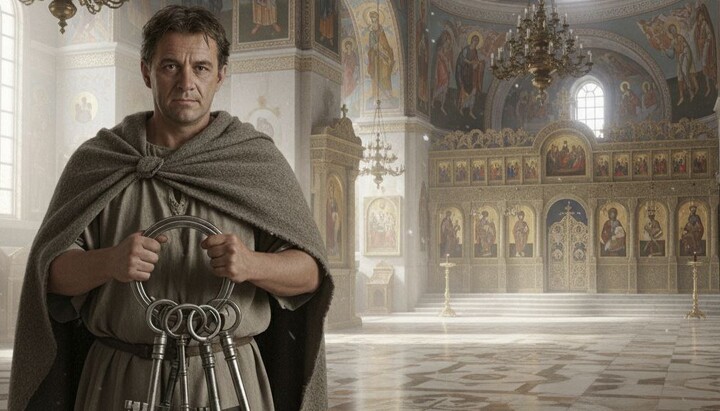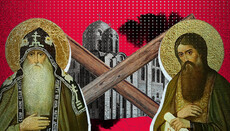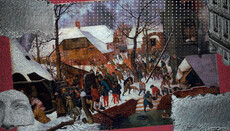Exorcists, acolytes, ostiaries: what were minor orders in ancient Church?

Of the minor clerical orders of ancient times, which will be discussed, today we only know of readers (lectors) and subdeacons. What were the others and what functions did they perform?
Today, the church clergy, i.e., individuals performing specific actions in the Church, are traditionally divided into clergy and church servants. The former includes bishops, priests, and deacons, while the latter includes subdeacons, readers (lectors), cantors, and sextons. In ancient times, there was also a division of the clergy into those of holy orders and monor orders.
The most comprehensive list of lower church positions is found in an epistle from the Roman Pope Cornelius to Bishop Fabius of Antioch, written around 251 AD.
In this letter, Cornelius refers to readers, subdeacons, acolytes, exorcists, and ostiaries among the minor orders of the church staff.
It should be noted that Cornelius lists positions that existed specifically in the Roman Church; other local Churches might have had differences, but not cardinal ones.
Exorcists
Exorcists, those who cast out the devil, or more precisely, conjurers, appeared in the Church from its very beginning. The Lord Jesus Christ, sending the apostles to preach, told them: “...as you go, proclaim that the Kingdom of Heaven is near; heal the sick, cleanse the lepers, raise the dead, cast out demons; freely you have received, freely give” (Matt. 10: 7–8).
This gift was initially charismatic and quite widespread. Possessing it was not considered something significant. Saint Justin the Philosopher (2nd century) in the “Dialogue with Trypho the Jew” says: “We, who believe in Jesus Christ crucified under Pontius Pilate, our Lord, exorcise all demons and unclean spirits, and hold them in our power”. A little later, in the early 3rd century, the famous Origen wrote: “Many of the Christians drive out (demons. – Ed.) from the possessed not by any inventions, magic or medical arts, but only by prayer and simple incantations – moreover, such as even the simplest person can use, as common folk generally do”. There is also mention of exorcists by Saint Irenaeus of Lyons (2nd century).
It is difficult to say how and when this charismatic ministry turned into a church position.
Apparently, the main duty of exorcists was not to heal possessed people but to offer incantatory prayers during the Sacrament of Baptism.
Today, these prayers are also included in the rite of Baptism and are recited by a priest or bishop. This explains why there is no position of exorcist in the Church today. In the Trebnik (The Euchologion) of St. Peter Mohyla, there is a rite of exorcising demons from those possessed by them, but the modern practice of “reading” is viewed rather ambiguously. Very few clergy undertake this task.
Acolytes and Ostiaries
There is little that can be said about these positions, since the sources known to us do not clearly indicate their duties, the requirements for candidates, or their place in the church hierarchy. The word acolouth (Greek ἀκόλουθος) does not refer to any specific type of church service but means “companion” or “attendant,” i.e., a person who assists or serves a particular individual and belongs to their retinue. The term ostiary is somewhat clearer; in Latin (ostiarius), it means 'doorkeeper' or 'porter'.
Most likely, acolytes were assistants to church officials, and ostiaries were servants of the church itself.
The duties of the latter included: unlocking and locking the church, keeping it clean, preventing those who did not belong to the church community from entering, and, at a certain point in the Liturgy, leading out those who were among the catechumens or penitents.Today's exclamation: “The doors! The doors!” was originally addressed to the ostiaries and meant the command to close the doors behind the catechumens, as the Liturgy of the Faithful was about to begin.
In the Orthodox Church, these lower church positions as such disappeared quite quickly, while in Catholicism, the order of ostiaries existed until 1972 and was considered a mandatory initial step on the path to priesthood.
Subdeacons
The Greek word “subdeacon” (ὑποδιάκονος) has a similar meaning to the word “acolyte” and means “assistant to the deacon”. However, unlike acolytes, the origin of subdeacons raises no particular doubts. Subdeacons originated from deacons, likely because it was long considered in the ancient Church that there could be no more than seven deacons in one city. This number is mentioned in the Acts of the Apostles. The 15th Canon of the Local Council of Neocaesarea (315 AD) states: “The deacons ought to be seven in number, according to the canon, even if the city be great. Of this you will be persuaded from the Book of the Acts.” However, the growth of Christian communities required an increase in the number of deacons. Thus, the institution of subdeacons appeared, i.e., assistants to deacons, who were to perform functions similar to those of deacons but were not considered deacons themselves.
Subdeacons held a more honorable position than acolytes, ostiaries, and exorcists. This rank was considered the last step before ordination to the holy order.
Those ordained as subdeacons are already forbidden to marry. Therefore, today, the young church servants we see at episcopal services and consider subdeacons usually just perform their functions, and the actual ordination to subdeacons occurs during the same Liturgy in which the candidate is ordained as a deacon.
Readers or Anagnosts
The first mention of church readers, according to many church historians, is already contained in the Revelation of John the Theologian: “Blessed is the one who reads aloud the words of this prophecy, and blessed are those who hear it and take to heart what is written in it, because the time is near” (Rev. 1: 3). "The one who reads" was was the church reader. The fact is that in the early centuries of Christianity, and indeed in all subsequent times until recently, literate people, i.e., those who could read, were quite few. Most believers simply could not read either the Gospels or the Epistles of the Apostles. And considering that most ancient texts were written in a way called scriptio continua in Latin, i.e., without punctuation marks and without spaces between words, it can be understood that reading in those times was the domain of very few.
Thus, the first duty of readers was to read the Holy Scriptures at at worship services. This position was very important and honorable, especially given that in the early centuries, even bishops were often illiterate. The 2nd-century collection of ecclesiastical laws “Church Canons of the Holy Apostles” assigns a very high place to readers in the church hierarchy and requires them to have high moral qualities. The high status of a reader in ancient times is also evidenced by the fact that among the signatures of the participants of the local Council of Arles (314 AD), alongside bishops, there are signatures of two readers.
The second duty of readers was to explain the Scriptures. Additionally, during persecutions, it was often entrusted to readers to hide the texts of the Holy Scriptures from persecutors.
In one of his letters, Saint Cyprian of Carthage (3rd century) writes about the appointment of a certain Celerinus as a reader: “We raised him up to the ambo... so that, placed in an elevated position and... visible to all the people, he might read the commandments and the Gospel of the Lord.” In the same letter, Cyprian calls the order of reader a step towards the order of presbyter.
The 4th-century monument “Apostolic Constitutions” provides a prayer for the appointment of a reader: “Eternal God... look upon Your servant, to whom it is entrusted to read Your Holy Scriptures to Your people, and grant him the Holy Spirit, the Spirit of prophecy....”
From this text, we learn that readers were required to read the Holy Scriptures at church gatherings and that they were candidates for holy orders. Gradually, from about the 2nd century, when the activity of charismatic teachers began to wane, the duty of reading the texts of the Holy Scriptures and explaining them was assigned to the anagnostes (readers). But they did not hold this duty for long. Quite soon, both the reading of the Holy Scriptures and their explanation became the exclusive duties of bishops, presbyters, and partly deacons. This was facilitated by the increase in literacy among the clergy.
Today, the position of reader is considered the first step on the path to priesthood, and there is a special rite of ordination to reader, which, as a rule, is performed on all graduates of theological seminaries.
As we can see, the minor orders of the church hierarchy in the ancient Church have practically lost their high significance today. They have either disappeared altogether, like exorcists, acolytes, or ostiaries, or changed the scope of their duties, like readers or subdeacons.











